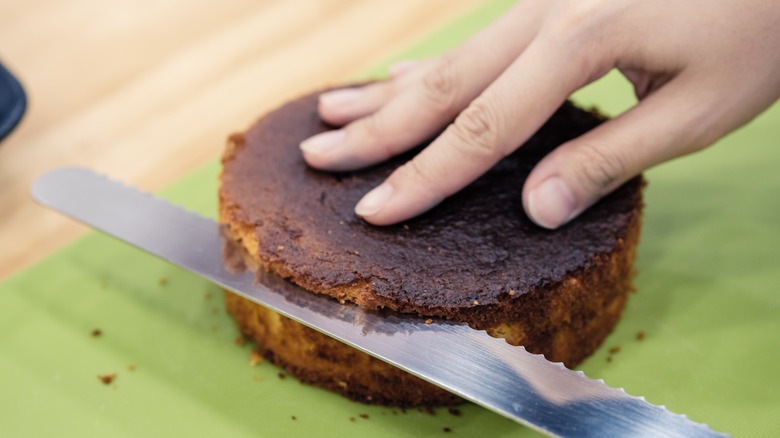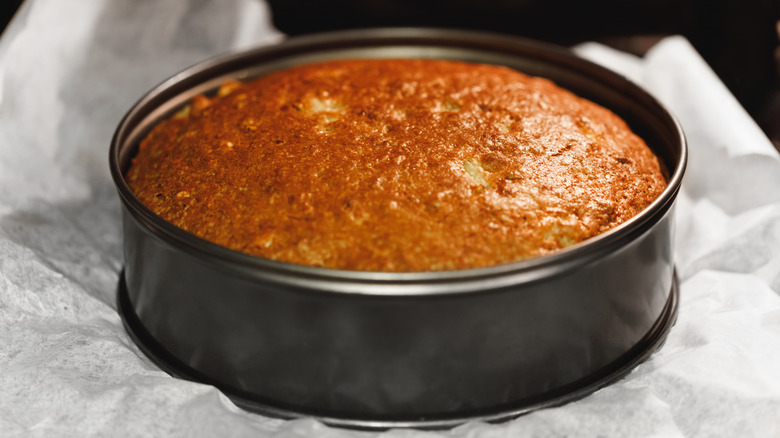Can You Level A Cake While It's Still In The Pan?
When it comes to desserts, cake, well, it takes the cake! Due to its fluffy, crumbly, sweet nature — and the wonderful fact that it can come in about any flavor — cakes are the top choice for birthdays, graduation parties, retirement celebrations, engagements, weddings, and promotions — you get the picture.
Whether you prefer a plain buttery slice of pound cake or a frosting-decorated death by chocolate extravaganza, cake is there for you, soft sugary, and oh-so-perfect to eat. Now for those, frazzled parents or busy college students that simply don't have the time, they'll run to a bakery or grocery store to grab something pre-made and professionally decorated, however many people prefer the experience and the heartfelt effort that goes into a homemade cake (it also happens that it is also the less expensive option).
For some occasions, sheet cakes might work out just fine, however, for a special occasion, layered cakes are often the best way to go. According to Sunny Daes Ice Cream, stacking cakes one on top of the other started out as an old wedding tradition; the more layers you had, the more popular the married couple was believed to be. Today, the symbolism is less important, but the art of layering a cake is still viewed as an elegant and attractive way to show off baked goods. Layering a cake can be tricky business though, so it's important that the tops of your desserts are flat before stacking.
Use the pan!
It is all too common to pull a cake out of the oven and find that the top part is peaking out over the top of the baking tin looking more like the French Pantheon than something that could be readily stacked. There are a few possible reasons your cake may have developed a dome. My Food Book says that a cake pan that heats up too quickly could be the issue, cooking the edges of the dessert too quickly so that the center has nowhere to go but up. Luckily, you don't have to throw out the whole cake and try again to get a flat top. Baking Kneads recommends that if your cake has risen above the lip of your baking pan, you can level the whole thing out, just don't take it out of the pan at all!
Instead, using a serrated knife, you can use the lip of the cake pan to guide your hand as you cut horizontally through the risen dome of the cake. Wilton suggests that for the best outcome, you should make sure the cake has completely cooled, then stabilize it by placing your hand on the top of the dome so that when you slice through, it won't move and you'll come out with a neat clean cut. You must also cut through the cake slowly or it might rip.

